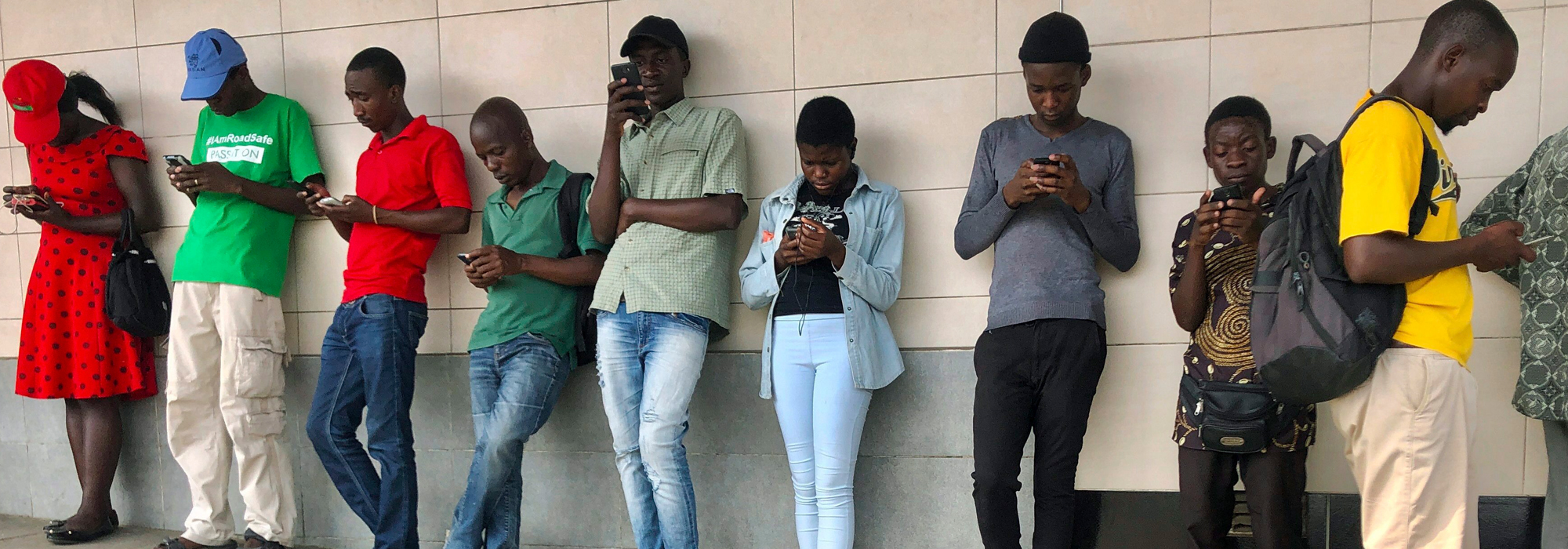
The DHL Global Connectedness Index released in December 2020 by New York University’s Sloan School of Business confirms what those of us who are glued to the global offerings of our technological devices already know – the world is becoming more interconnected, even as “people flows” are way down (not surprising during a pandemic).
However, around the world, access to the internet – the rates of connectivity – vary widely. The pandemic has highlighted the ongoing challenges of bridging the digital divide, a divide that prevents people from reaping the benefits of the digital economy.
Why not utilize this crisis point as an opportunity for the so-called “like-minded” countries to come together in support of global digital connectivity and inclusivity? Now is the time to ensure that countries with open markets also have the advantage of unfettered access to digital resources – a democracy dividend.
Digital connectivity, inclusivity and decoupling
Globally, the cost of digital connectivity remains a significant obstacle. As noted by Jonathan Davidson of Cisco’s Mass-Scale Infrastructure Group, “An internet connection is really only affordable in 29 out of the world’s 195 countries.”
Digital inclusivity is another issue. According to the International Telecommunications Union, men, urban residents and young people are more likely to be online than women, rural dwellers and older people.
The internet-access gender divide is also confirmed by RIWI Corp., which uses its random intercept survey technology to capture an accurate representation of the internet population in the developing world. According to RIWI’s internal data, there is on average a 65 per cent versus 35 per cent (men to women) access ratio in developing countries, with the gap even further pronounced in the Middle East, North Africa, South Asia and parts of Sub-Saharan Africa.
The pandemic has highlighted the vulnerability of global value chains which were designed to maximize efficiency, but without much thought to potential disruptions of this kind. In addition, global value chains are often dependent on inputs from China where the pandemic has also taken its toll. Another challenge, in particular for the innovation-driven sectors of the global economy, is the “decoupling” of the U.S. and China as they pursue increasingly separate technology agendas. This does not portend well for a future digital economy with high interoperability, where industries can compete globally on compatible platforms
More digital co-ordination among like-minded countries
Another disturbing trend – according to the Economist Intelligence Unit – is that democracy suffered a setback in 2020. Almost 70 per cent of countries covered by the EIU’s Democracy Index recorded a decline in their overall score as countries locked down, with the global average falling to its lowest level since the index began in 2006.
Some of Canada’s democratic country colleagues are recognizing the necessity for coordination to promote digital access and inclusivity through different mechanisms.
The United Kingdom has the presidency of the G7 this year, and Prime Minister Boris Johnson has been pushing a vision to create a “democratic 10” or D-10 – including India, Australia and South Korea. Johnson has said one of the main goals of the group would be to ensure China does not dominate the 5G technology space globally. Two former U.S. State Department officials recently penned a column calling for the creation of a “Technology 12” which would bring together the top democracies to combat China’s growing technological superiority. The Biden Administration has also announced a meeting of democracies for April this year. Whatever the proposal under consideration by like-minded countries, the objective should be the building of global digital infrastructure (including 5G), that supports greater digital access across all segments of the participating nations’ populations and of the capacity to take advantage of better digital connectivity.
This kind of “bandwidth for all” initiative (as espoused by New York Times columnist Nicholas Kristof and others) would, through domestic and international development funding, provide the digital infrastructure foundation for efforts to improve global health and foster a green economy, build resilience for the next pandemic and combat climate change, not to mention augmenting the skills needed to compete in the digital economy.
Promoting improvements in digital infrastructure is a contribution Canada can make through its participation in the G7, G20, APEC and beyond. Canada could be out in front in proposing joint initiatives that build the foundation for improved efficiency across a wide spectrum of industry sectors that are important to developing and developed countries alike – agriculture, health, education, resources, energy, environment, manufacturing and financial services, to name a few.
Canada could also take the lead among its like-minded developed partners in supporting the kind of digital capacity-building that will be critical to inclusive economic growth in the developing world. For example, the creation of a better system for digital identification infrastructure (for digital signatures and the like) is another key element to inclusive economic growth.
The Digital Economy Partnership Agreement (DEPA) signed between New Zealand, Singapore and Chile, is one joint initiative that could be replicated around the world. The agreement facilitates digital trade but also trust, including through the establishment of secure digital identities. Through the D-10, Canada could propose a fund that would support developing countries that would like to sign on to similar digital economy agreements. We are in the era of a data-driven world economy that is engendering a global digital transformation. We can employ digital technologies to address the challenges of digital connectivity and inclusion.
A role for the private sector
One interesting thing about the digital economy is that it allows small- and medium-sized enterprises (SMEs) to compete internationally. One has only to look at the Shopify website to recognize this potential for even small businesses to market their products and services around the globe.
But SMEs in every country are now experiencing the hardships of the pandemic, and those without digital tools could be threatened more severely. As part of its capacity-building offerings for SMEs in the developing world, Canada could bring to the table successful private sector models for building digital literacy such as the Recovery Activation Program offered by the Toronto Region Board of Trade.
The like-minded, through collaboration and capacity-building via the D-10 or other fora, can foster the creation and growth of the digital sector and give SMEs the opportunity to compete on a global scale. Unfettered access to the technologies of their choice should give the SMEs in free market economies a natural advantage – a democratic dividend.
The digital economy is the connective tissue that binds us together, around the world and across industrial sectors. Canada has a role to play in ensuring that we go beyond simply applying band-aids to this critical infrastructure, while helping promote better access across all societies.
This article is part of the Digital Connectivity in the COVID Era and Beyond special feature.









